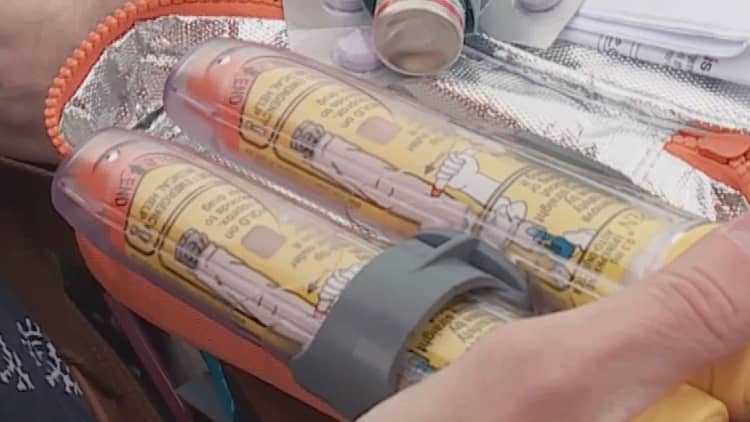
A two-pack of EpiPens, the lifesaving anti-allergic reaction device, can cost $600 or more for some customers, but the device reportedly costs just several dollars to actually make.
EpiPen's big price tag — which has grown dramatically in recent years — is currently drawing the ire of consumers and politicians who are outraged at what they see as gouging by EpiPen's owner, Mylan.
People with allergies and the parents of allergic kids are urged to have multiple packs of EpiPens at home, their school or office, and in cars. They say their household budgets are being stretched by what they have to pay out of pocket for them, and that the price isn't justified.
They may have a point.
EpiPens, which counteract potentially fatal anaphylaxis, contain the drug epinephrine.
And just $1 or so worth of epinephrine is used in the auto-injection device. That device itself is believed to cost just several more dollars to make.
People who have created workarounds for EpiPens have spent just $15 or so on the syringes.
That gap between cost and price have delivered some very nice revenue for Mylan, where EpiPen is a leading product. The company reported $9.45 billion in revenue for 2015 — up from $7.7 billion the year before — and $1.46 billion in income. A reported $1 billion in revenue comes from EpiPen, up from the $200 million in revenue at the time Mylan first acquired the devices.
While Mylan has aggressively sought to expand the market for EpiPens by getting them placed in schools and trying to get them mandated for all airlines flying in the United States, the company didn't have to spend a nickel actually creating the product.
The EpiPen was acquired by Mylan in 2007, along with other products from Merck.
The device itself had been around decades before that. EpiPens were invented at a Maryland company called Survival Technology in the 1970s by engineers who included a man named Sheldon Kaplan.
Originally called the ComboPen, the devices were bought by the U.S. Department of Defense for use in delivering medicine that would counteract the effects of nerve agents. Kaplan later tweaked the ComboPen to deliver epinephrine to counter the effects of anaphylaxis.


